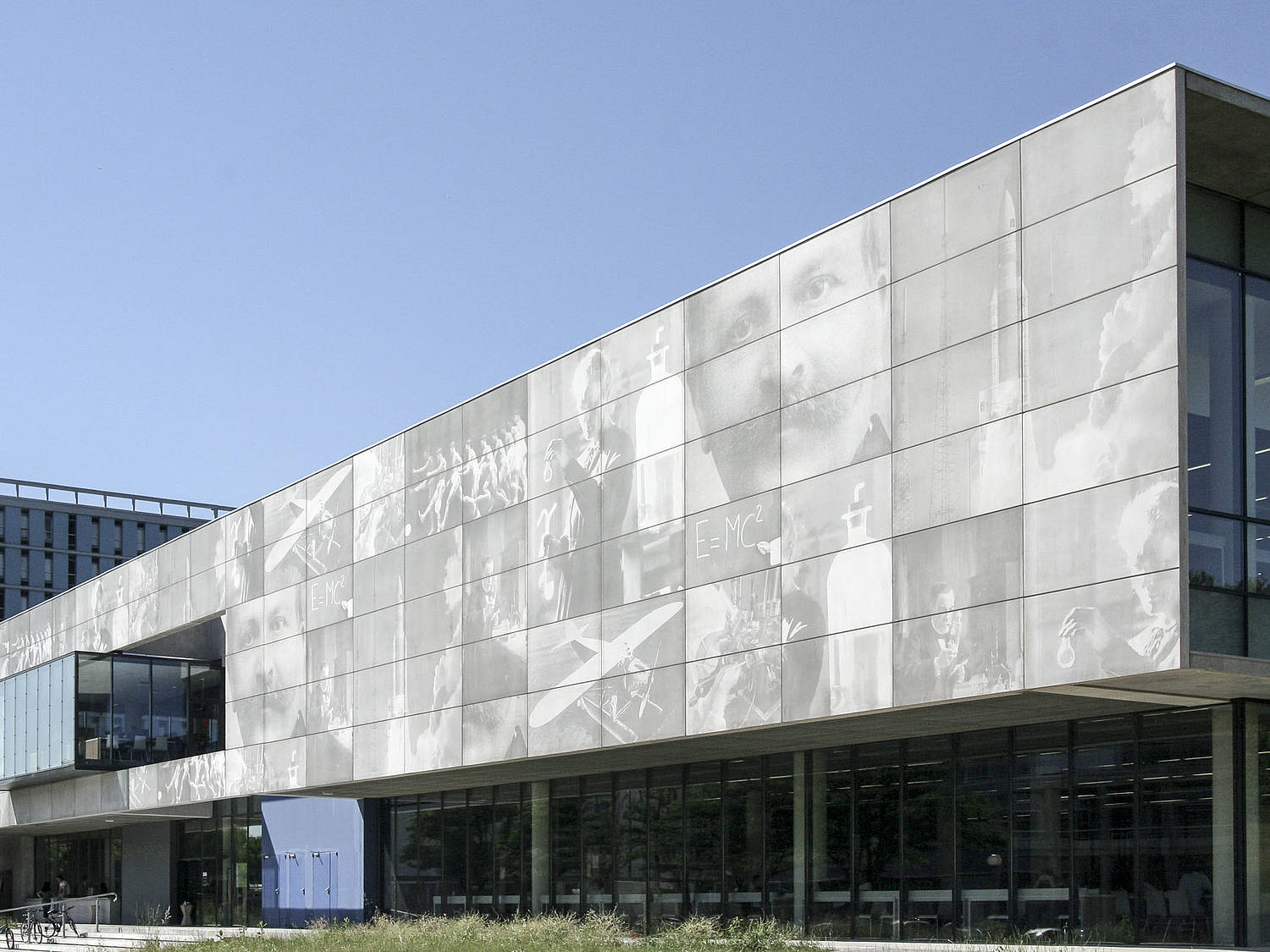University Paul Sabatier, Toulouse, France
The library extension at Paul Sabatier University in Toulouse is clearly inspired by education and science: photo engravings decorate the building’s concrete façade.
Paul Sabatier University on the southern outskirts of Toulouse has established itself as the largest scientific university in south-western France. Its library was built in the 70s, and its size and configuration have not been able to keep pace with the growth of the university and its student body. In order to rise to the challenges of a modern media and information center, the university commissioned an extension to the existing building.
Architect Richard Milani from the firm Espagno & Milani designed a building that clearly stands out from the campus while making its use immediately clear. The extension joins the existing building and continues the orthogonal direction of the campus. Over the completely glazed ground floor, there is a rectangular structure with a concrete façade whose unusual texture immediately catches the eye.
Depending on the light and the angle, various photos can be seen that symbolically represent the focal points of the faculties that call the university home as well as industries based in Toulouse.
This unusual design was facilitated by the photo engraving system, which applies photos and graphics onto concrete. This innovative procedure was awarded the ‘Most Innovative Product Award’ at the ‘World of Concrete’ expo in Las Vegas in 2009. First, the image is scanned onto a computer and then transformed into a file with 256 shades of gray. The template can be scaled to create a photo engraving formliner of any size. To transfer the image onto the working material, the gray values are used to generate an editing file with milling commands for the CNC machine. A positive model is then milled to serve as the template for the RECKLI formliner. Its elasticity, quality and reproducibility ensure that the process can be economically realized without compromising on aesthetics.
The relief-like surface of the photo engraving creates a likeness of the original image template through light and shadow. When lit from the side, the photo is considerably clearer than when lit from the front or in shadow. The motif on the façade offers a range of different views as the sun moves across the sky.
For the university library in Toulouse, the architect chose eight different photos made up of modules measuring 2.4 x 1.2 m. The total sizes of the photos vary from one module, for Albert Einstein’s e=mc2 formula, to eight modules for the panel with Marie Curie. A detailed façade plan laid out the precise configuration and allowed for complete photos as well as a repetition of individual photo modules. This gives the impression of a limitless photo collage.
RECKLI produced a total of 36 photo engraving formliners at the Midi Préfa Industrie prefab plant in Graulhet. One concrete element was generally up to six modules high and one module wide. In order to ensure the most flexible layout of fabrication tables, the formliners were individually taped to wooden boards and used in compliance with the relevant configuration of concrete elements. Between the formliners, molding was used to create a faux join to accentuate the modules. Close collaboration between the architecture firm, the construction company, the concrete prefabrication plant and RECKLI resulted in a truly unique façade.
